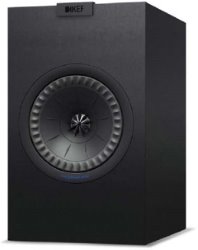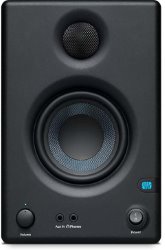KEF Q150 vs. Presonus Eris E3.5
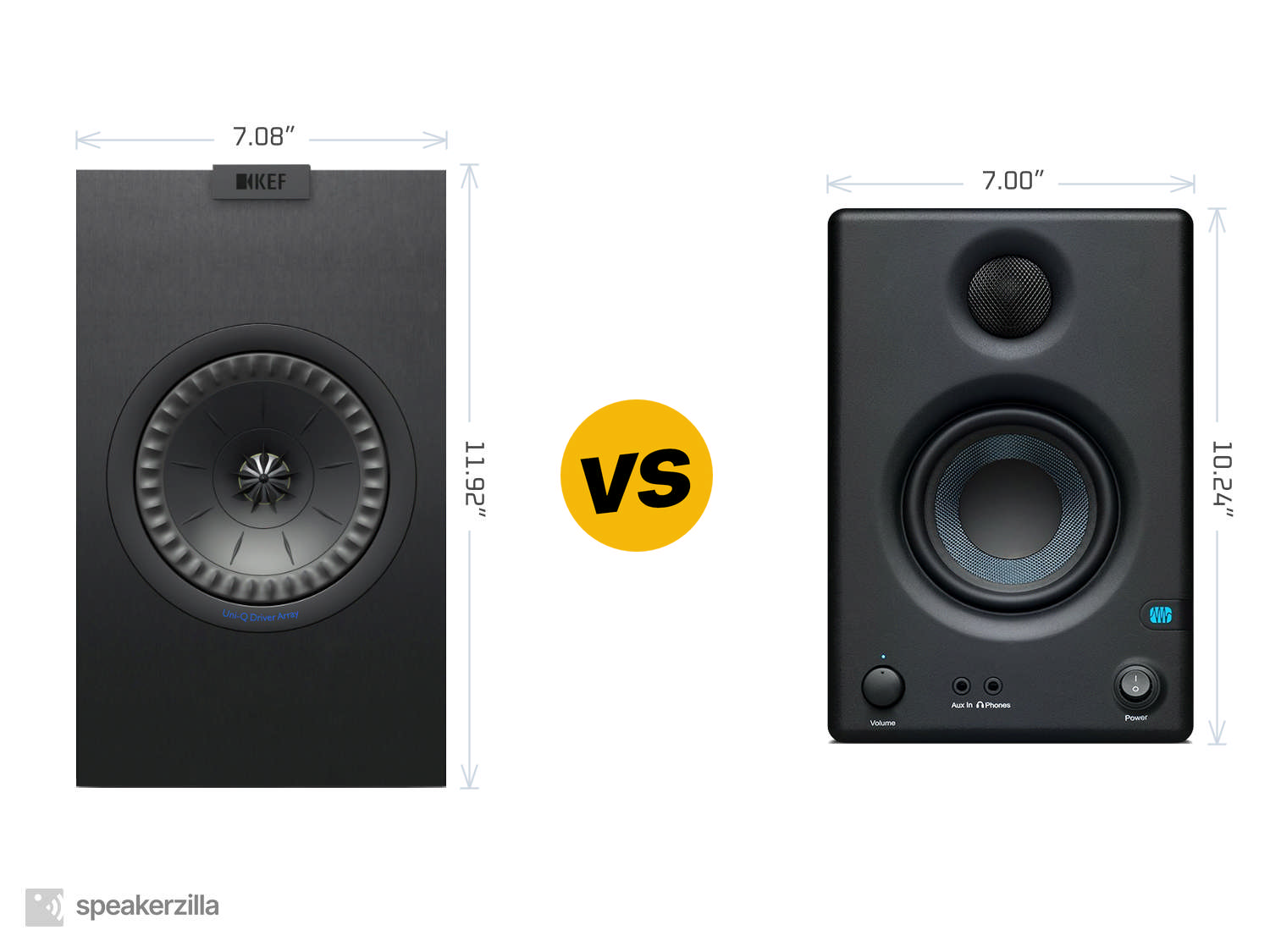
| KEF Q150 Bookshelf Speakers | Presonus Eris E3.5 3.5” Near Field Studio Monitor |
| MSRP | |
| $600 | $100 |
| Dimensions (H × W × D) | |
|
11.92” × 7.08” × 10.94” 303mm × 180mm × 278mm |
10.24” × 7.00” × 7.68” 260mm × 178mm × 195mm |
| Power Type | |
| Passive | Powered |
| Frequency Response | |
| 51-28,000 Hz | 80-20,000 Hz |
| ASR Score | |
| 4.8 | 1.5 |
| ASR Score w/Subwoofer | |
| 6.9 | 4.3 |
|
Amazon.com
|
Amazon.com
|
Key Takeaways
TLDR Summary: In the world of compact speakers, the KEF Q150 bookshelf speakers and PreSonus Eris E3.5 monitors serve different masters. The Q150s, with their Uni-Q driver array, deliver a wide soundstage and intricate detail, appealing to audiophiles craving a hi-fi experience in a small room. Meanwhile, the Eris E3.5s are tailored for content creators and musicians, offering an honest, flat response for mixing and production. Both present exceptional value, but choosing between them hinges on your end-use—lush, expansive listening with the KEFs or critical, analytical work with the PreSonus monitors.
Speaker Comparison
When audiophiles and music enthusiasts look to upgrade their sound system, they often find themselves comparing speakers from various tiers and purposes, such as the KEF Q150 bookshelf speakers and the PreSonus Eris E3.5 near field studio monitors. Although these two models serve different markets—the Q150 being part of the revered British hi-fi tradition and the Eris E3.5 tailored for the home studio crowd—they both command attention for their respective strengths in sound reproduction.
Design and Build Quality
The KEF Q150 speakers exude sophistication with their sleek, European design and the brand's signature Uni-Q driver array, which has a reputation for its excellent imaging and soundstage. The construction is robust, and the finish of the Q150 is more premium, offering a touch of class to any room they grace. In contrast, the Eris E3.5 has a more utilitarian design that focuses on functionality for the studio environment. While the build quality is solid, it's clear that the Eris E3.5 is designed with a more budget-conscious and workmanlike approach in mind.
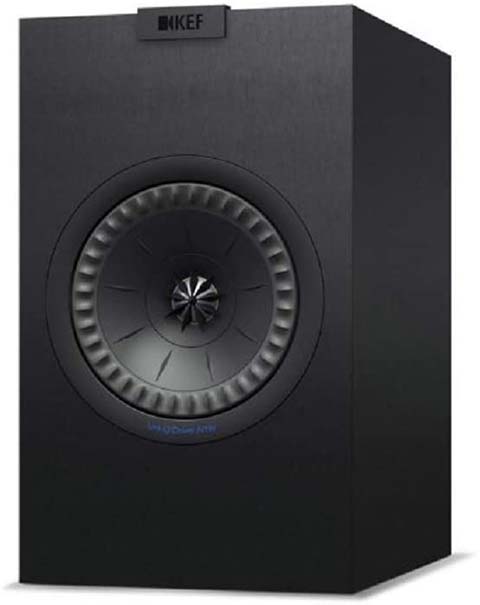
 (at Amazon.com)
(at Amazon.com)Sound Quality – The Home Listening Experience
The KEF Q150 shines when placed in a traditional home listening setup, where its wider frequency range and larger 5.25-inch driver deliver a fuller and richer sound that is both warm and detailed. The Uni-Q driver ensures that the sweet spot is not just a spot but rather a wide area, allowing for a more flexible listening position. The bass response, while not ground-shaking, is precise and well-integrated with the mids and highs, making for a balanced and enjoyable listening experience, whether you're sitting down for critical listening or moving around the room during a social gathering.
Sound Quality – The Studio Perspective
On the flip side, the PreSonus Eris E3.5, with its 3.5-inch woofers, is designed for near-field listening typical of studio environments. These monitors aim for flat frequency response to ensure that audio professionals can hear the mix as it is, without added coloration. They’re excellent for editing, mixing, and reference purposes, providing clear and detailed sound that highlights imperfections in recordings that need to be addressed. However, for casual listening, some might find them less engaging compared to the KEF Q150s due to the E3.5's emphasis on accuracy over the warmth and expansiveness that home listeners often treasure.
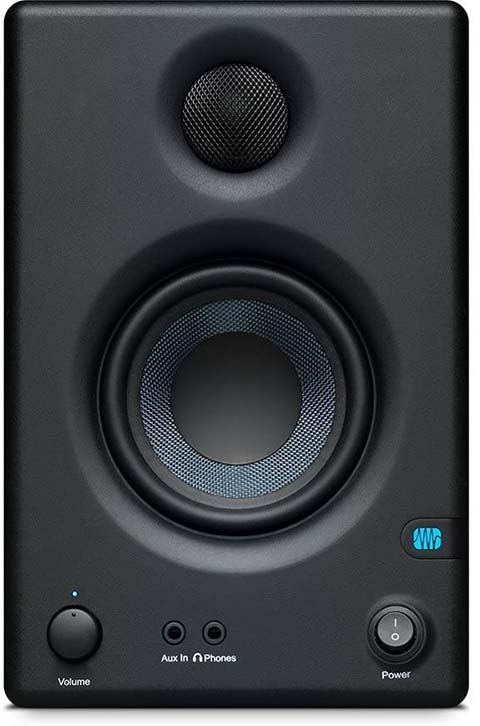
 (at Amazon.com)
(at Amazon.com)Connectivity options between the two are quite different as well. The passive KEF Q150s require an external amplifier or receiver to power them, offering audio enthusiasts the flexibility to pair them with a wide range of electronics to tune their sound to personal taste. The PreSonus Eris E3.5s are active monitors featuring built-in amplification, making them a more plug-and-play solution, with the added convenience of front-panel volume control and a headphone jack. This makes the Eris E3.5 more suited for desktop use where space and simplicity are key.
Compare to similar speakers
When considering room size, the KEF Q150s' larger drivers and superior power handling make them a better fit for medium to large rooms where their sound has space to breathe and develop. In contrast, the PreSonus Eris E3.5s, with their more compact size and lower power output, are ideal for small rooms and close listening environments typical of home studios and desktop settings.
In conclusion, while both the KEF Q150 and the PreSonus Eris E3.5 have their unique strengths and applications, they cater to different listening scenarios and budgets. The Q150s are geared towards the audiophile seeking a high-fidelity listening experience in the comfort of their home, while the Eris E3.5s are tailored for the content creators and audio professionals seeking accuracy and detail in a studio monitor. Ultimately, choosing between these two quality speakers comes down to your listening preferences, intended use, and the acoustic space you're working with.
- KEF Q150 reviews and FAQs
- Presonus Eris E3.5 reviews and FAQs
Check Current Prices: |
|
|
Amazon.com
|
Amazon.com
|
Affiliate Disclosure: As an Amazon Associate, we earn from qualifying purchases.
